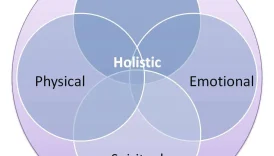Exploring the Timeless Elegance of Tapestry Wall Hangings

Brief History of Tapestry Wall Hangings
Tapestry wall hangings have a rich history that dates back to ancient civilizations. Originally, these intricate pieces of art served both aesthetic and practical purposes. They were crafted by skilled artisans using techniques passed down through generations, often depicting historical events, religious narratives, or regal scenes. In medieval Europe, tapestries became a symbol of wealth and status, adorning the walls of castles and cathedrals. They provided insulation against cold stone walls while displaying the owner’s prestige. Many notable tapestries, such as the famous “Unicorn Tapestries,” showcase the remarkable craftsmanship of the time, blending art with storytelling, sparking curiosity about their origins and meanings.
- Exploring the Timeless Elegance of Tapestry Wall Hangings
- Brief History of Tapestry Wall Hangings
- The Evolution of Tapestry Art
- Types of Tapestry Wall Hangings
- Traditional Designs
- Modern and Contemporary Styles
- Materials and Techniques
- Woolen Tapestry Weaving
- Silk and Cotton Blends
- Popular Themes in Tapestry Art
- Nature and Wildlife
- Mythology and Religion
- Choosing the Right Tapestry for Your Space
- Size and Scale Considerations
- Complementary Colors and Patterns
- Decorating Tips with Tapestry Wall Hangings
- Statement Piece Placement
- Layering with Other Textiles
- Care and Maintenance of Tapestry Art
- Cleaning and Dusting
- Storage and Preservation Techniques
The Evolution of Tapestry Art
As societies evolved, so did the art of tapestry making. The Renaissance brought a shift in design, introducing more vibrant colors and elaborate patterns. With the rise of industrialization in the 18th and 19th centuries, tapestry production became more accessible due to advancements in technology, allowing for mass production without sacrificing quality. Today, tapestry art continues to thrive and diversify. From traditional to contemporary designs, modern artists reinterpret this ancient craft through:
- Bold colors and abstract forms
- Mixed media techniques
- Environmental themes
Each piece tells a story, preserving the legacy of tapestry art while embracing new styles and ideas. This dynamic evolution highlights not only the versatility of tapestries but also their enduring cultural significance.
Types of Tapestry Wall Hangings
Traditional Designs
When you think of tapestry wall hangings, traditional designs likely come to mind first. These pieces often embody rich cultural heritage and craftsmanship, reflecting the artistry of past centuries. Traditional tapestries are characterized by their intricate details and historical themes. Some common motifs found in traditional designs include:
- Religious Iconography: Depictions of saints, angels, or biblical scenes that were often commissioned for churches or noble homes.
- Mythological Tales: Illustrations of gods and mythical creatures that tell stories passed down through generations.
- Flora and Fauna: Depictions of nature, often symbolizing fertility, growth, or beauty, which served both decorative and metaphorical purposes.
A personal favorite example is the renowned “The Lady and the Unicorn” series, which illustrates the quintessence of medieval tapestry art, combining narrative depth with intricate craftsmanship.
Modern and Contemporary Styles
In contrast, modern and contemporary tapestry styles push the boundaries of tradition, often focusing on abstract concepts and vivid color palettes. Artists today experiment with various techniques and materials, breaking away from conventional themes. Key characteristics of modern tapestries include:
- Bold Patterns: Geometric shapes and vibrant colors that create a striking visual impact on walls.
- Mixed Media: Integration of unconventional materials like metal, wood, or found objects, giving tapestries a three-dimensional quality.
- Social Issues: Themes that address contemporary issues such as identity, climate change, and social justice, resonating with today’s audiences.
This evolution in tapestry art opens a world of possibilities, appealing to a broader range of tastes while still honoring the craft’s origins. Each style offers a unique way to express individuality within home decor.
Materials and Techniques
Woolen Tapestry Weaving
Woolen tapestry weaving has long been revered for its warmth, durability, and rich texture, making it one of the most traditional materials for creating stunning wall hangings. Wool fibers, obtained from sheep, are known for their natural resilience and ability to absorb dyes, resulting in vibrant colors that stand the test of time. Advantages of woolen tapestries include:
- Warmth: Excellent insulation, providing coziness to a room.
- Natural Sheen: Wool possesses a natural luster, enhancing the overall visual appeal.
- Variety in Texture: Weaving techniques can create differing textures, from soft and plush to rough and rustic.
Woolen tapestries are often created using a technique called “weft-faced weaving,” where the weft yarns (horizontal threads) are more prominent than the warp yarns (vertical threads). This results in intricate designs that can be appreciated from both sides of the tapestry, a testament to the skill of the artisan.
Silk and Cotton Blends
On the flip side, silk and cotton blends represent a modern twist on tapestry material. Combining the elegance of silk with the practicality of cotton yields unique benefits. Some attributes of silk and cotton blend tapestries include:
- Luster and Shine: The silk imparts a beautiful sheen that catches the light and adds sophistication.
- Softness: These tapestries feel luxurious to the touch, making them an inviting choice for home decor.
- Versatility: Ideal for intricate designs and detailed imagery, allowing artists to explore various themes.
Crafting with these materials often involves techniques like “Jacquard weaving,” which allows for complex patterns to be woven directly into the fabric, creating stunning visuals. By exploring the distinct characteristics of woolen and silk-cotton tapestries, one can appreciate the craftsmanship and artistry that goes into every piece. These materials not only enhance the aesthetic of wall hangings but also tell a story woven through their textures and colors.
Popular Themes in Tapestry Art
Nature and Wildlife
Nature and wildlife have been enduring themes in tapestry art, capturing the beauty and intricacies of the natural world. These tapestries often serve as windows into lush landscapes, vibrant flora, and diverse fauna, echoing humanity’s deep connection to nature. Some popular motifs in this theme include:
- Floral Patterns: Incorporating various flowers, leaves, and plants, these designs evoke a sense of tranquility and beauty.
- Animal Imagery: From majestic deer to playful birds, animal representations symbolize freedom, grace, and the wild spirit.
- Scenic Landscapes: Tapestries depicting mountains, rivers, and forests transport viewers into serene environments, perfect for calming spaces.
One personal favorite is a tapestry depicting a tranquil forest scene, with sunlight filtering through the leaves, creating a peaceful atmosphere that brightens any room.
Mythology and Religion
Another prominent theme in tapestry art is mythology and religion. These works often serve as storytelling devices, depicting divine figures, legends, and moral tales that resonate across cultures. Key aspects of mythology and religious tapestries include:
- Depictions of Deities: Illustrating gods and goddesses, these designs convey spiritual messages and cultural beliefs.
- Narratives and Legends: Tapestries may illustrate well-known myths, including epic journeys or heroic deeds that captivate the imagination.
- Symbolism: Colors, figures, and patterns encode deeper meanings, offering layers of interpretation.
An example is the intricate depictions of Greek mythology found in various tapestries, where each thread tells a story of love, betrayal, and heroism. These pieces not only enchant the eye but also provoke thought and reverence for the cultural stories that shape our world. Whether celebrating the beauty of nature or exploring the depths of mythology, these themes create a rich tapestry that connects viewers to history, values, and emotions on multiple levels.
Choosing the Right Tapestry for Your Space
Size and Scale Considerations
Selecting the right size and scale for your tapestry is crucial for achieving a harmonious look in your space. Tapestries can serve as striking focal points or subtle accents, depending on their dimensions. When considering size, keep the following tips in mind:
- Wall Space: Measure the area where you intend to hang the tapestry. A larger tapestry can dominate a wall, while a smaller piece may be more suitable for tighter spaces.
- Room Proportions: Consider the proportions of your room. A grand, high-ceiling space might benefit from a larger tapestry, while cozy nooks may require smaller, more intimate pieces.
- Furniture Arrangement: Think about how the tapestry will relate to surrounding furniture. A large tapestry above a sofa can create a cohesive look, while smaller pieces may be used as part of a gallery wall.
Personally, I’ve found that choosing oversized tapestries has transformed my living room into a vibrant storytelling space, inviting conversation and admiration.
Complementary Colors and Patterns
Once you’ve considered size, the next step is ensuring your tapestry complements the existing color scheme and patterns in your room. Color harmony plays a significant role in achieving a balanced aesthetic. Here are some tips to guide your selection:
- Identify Dominant Colors: Look at the primary colors in your room’s decor. Choose a tapestry that incorporates these hues, either matching or contrasting effectively.
- Consider Patterns: If your room features bold patterns on furniture or curtains, opt for a tapestry with subtle or neutral designs to maintain visual balance.
- Thematic Connection: Select a tapestry that resonates with your room’s theme, whether it’s bohemian, rustic, or modern.
For example, a tapestry with rich greens and earthy tones can beautifully unify a nature-inspired space, creating a sense of flow. Ultimately, the right tapestry elevates the mood of your room, making it a true reflection of your personal style and space.
Decorating Tips with Tapestry Wall Hangings
Statement Piece Placement
One of the most impactful ways to use tapestry wall hangings is by positioning them as statement pieces in your space. These large, visually striking works of art can instantly elevate the ambiance of a room. Here are some placement tips:
- Focal Wall: Hang the tapestry on a wall that you want to draw attention to, such as the one behind your sofa or bed, and let it serve as the room’s centerpiece.
- Height Matters: Consider mounting it at eye level to ensure it’s easily appreciated by guests. This height also encourages interaction and discussion.
- Balance with Decor: Ensure that the tapestry complements existing decor like furniture or other artwork. For instance, a bold, colorful tapestry can balance minimalist furnishings, creating a dynamic contrast.
A personal favorite of mine is hanging a large, intricate Gothic-style tapestry above my fireplace. It adds historical depth and serves as a captivating conversation starter.
Layering with Other Textiles
Layering tapestry wall hangings with other textiles can add depth and richness to your decor. This technique creates a cozy, inviting atmosphere, perfect for enhancing your spaces. Here are some tips for successful layering:
- Draped Fabrics: Consider adding sheer curtains or lightweight throws that complement the tapestry’s color palette, creating visual interest without overwhelming the space.
- Contrasting Textures: Pair your tapestry with various textures, such as plush pillows or woven baskets, to produce a tactile experience that captivates visitors.
- Gallery Wall Approach: Combine different artworks and textiles into a gallery wall, incorporating framed prints, smaller tapestries, and fabric panels. This eclectic mix adds a personalized touch to your decor.
Experimenting with these layering techniques can transform a simple room into an artistic haven, inviting creativity and comfort into your home. Each tapestry will play a role in telling your unique story, adding layers of meaning and style to your living space.
Care and Maintenance of Tapestry Art
Cleaning and Dusting
Keeping your tapestry art in pristine condition requires regular cleaning and dusting. Though these pieces can be quite durable, they are still susceptible to dirt, dust, and accidental spills. Here are some practical cleaning tips:
- Gentle Dusting: Use a soft feather duster or a clean, dry microfiber cloth to gently remove dust from your tapestry. This should be done every few weeks to prevent the accumulation of dirt.
- Spot Cleaning: For minor stains, dab the affected area with a damp cloth using a mild soap solution. Always test a small, inconspicuous area first to ensure that colors don’t run.
- Professional Cleaning: For older or valuable tapestries, consider professional cleaning services every few years. They specialize in techniques that protect the fabric while ensuring deep cleaning.
I personally make it a point to dust my tapestries when I clean my home. It’s a small task that yields tremendous results in maintaining their charm.
Storage and Preservation Techniques
When it comes to storage and preservation of tapestry art, proper techniques can prolong their life significantly. Whether you’re relocating or simply storing your pieces, keep these tips in mind:
- Roll, Don’t Fold: Always roll your tapestry around a sturdy tube rather than folding it, which can lead to creases and damage.
- Use Acid-Free Materials: Store your tapestry in a breathable, acid-free cotton bag or wrapping. This helps prevent mold and protects against fading or discoloration.
- Avoid Direct Sunlight: Whether displayed or stored, keep your tapestries out of direct sunlight to minimize fading and degradation from UV rays.
By following these care and maintenance tips, tapestry lovers can ensure their cherished artworks remain vibrant and striking for years to come. Your tapestry is not just a decoration; it’s a story woven through time, deserving the utmost protection and care!





